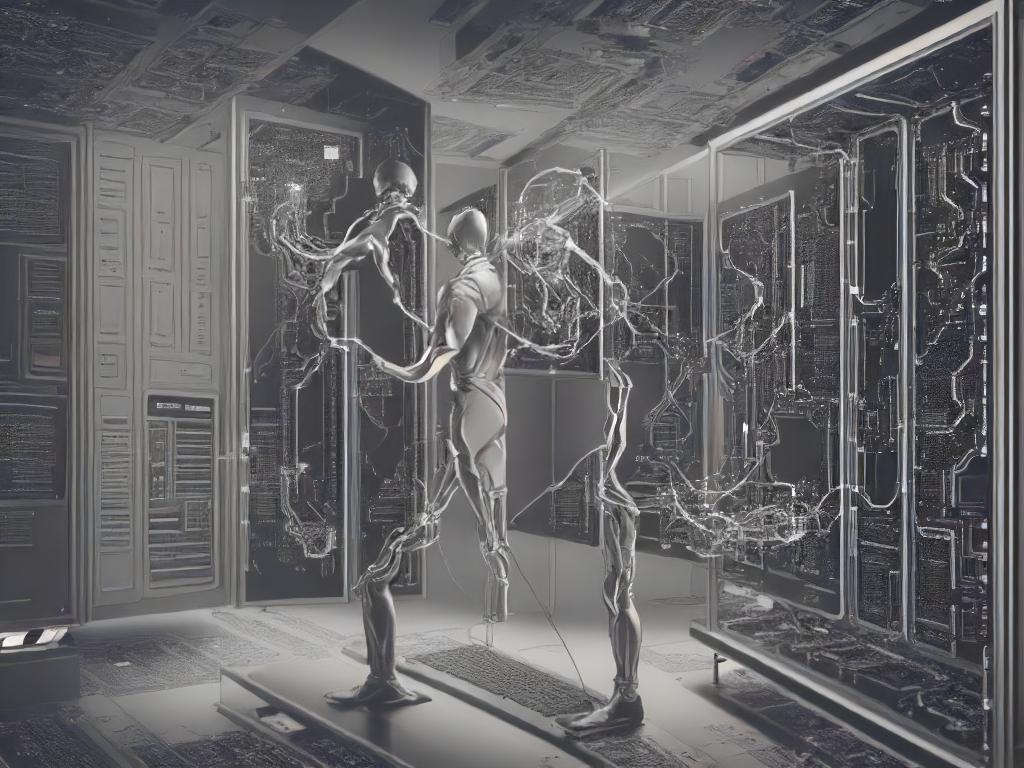Evolving from user understanding to building adaptive, compensatory and co-creative systems
User-centric design (UCD) has been a guiding principle in software development for decades, particularly in the SaaS (Software-as-a-Service) context. However, as technology advances and user expectations evolve, the concept of UCD is likely to transform meaning, enabling new possibilities and inclusion of concepts, such as assistive, compensatory, and co-creative systems.
In this passage, I have stretched the dotted line further into the future envisioning what the transformation of user-centred design could look like and what UX/Product Designers should be gearing up for.
The evolution of “meaning“
Language is not static; it evolves alongside the concepts it describes. The term “secure systems,” for instance, has undergone a significant transformation over time. In the early 1990s, it might have simply referred to basic protections like firewalls and antivirus software. However, as technology and threats have evolved the concept of “secure systems” has expanded into a complex field encompassing a wide range of measures to ensure the safety, stability, and continuous operation of digital infrastructure. We still refer to such a system as a “secure system”, however, what goes into it and what it is meant to have much evolved since its inception.
Similar shifts of concept evolution have occurred in other fields. For instance, the term “marketing” has evolved from simply promoting products to building customer relationships and delivering personalised experiences. Similarly, “customer service” has transformed from reactive problem-solving to proactive customer engagement and relationship building.
Similarly, the terms “user-centricity” and “user-centred design” are poised for a significant evolution of meaning, especially when the technology that is used to build such systems is evolving.
Next stop: Adoptive Systems Design
Adoptive design could be the next frontier in UCD, where digital applications actively adapt to user needs bending, transforming and improving the way they work giving users the shortest path to achieve their goals. This approach goes beyond traditional personalisation as what’s changing is not the content, but the structure of the system itself based on learned-user-behaviour providing the shortest, easiest and most convenient path leading to user goals.
Examples: Assistive SaaS applications could leverage similar principles to enhance user productivity and efficiency. For example, a project management tool could automatically prioritise tasks based on user deadlines and work patterns, or a CRM system could suggest relevant customer interactions based on past interactions and user goals.
How adaptive systems may work
Email typically presents a standardised inbox view, with sorting options limited to date, sender, or subject.
Adoptive Evolution: An adoptive email client could analyse your email habits: which emails you open first, how you categorise emails, and which actions you take most frequently (reply, archive, delete). Based on this, it could:
- Prioritise: Automatically surface emails from important contacts or related to urgent projects.
- Categories: Create dynamic folders that adapt to your labelling habits, grouping emails by project, client, or topic.
- Streamline Actions: Offer quick actions based on your common responses, making it easier to reply, forward, or archive emails with a single click.
Other possible applications of adaptive systems can be in eCommerce, CRM and project management tools.
Adoptive is not equal to Personalisation
Adoptive systems differ significantly from data personalisation, commonly seen in content publishing platforms like YouTube, TikTok, or Twitter. While personalisation tailors the content presented to users, adaptive systems go further by adapting the underlying structure and functionality of the application itself. This means that instead of just modifying the data shown, adaptive systems actively change how they operate based on individual user behaviour and preferences.
Next stop: Compensatory Systems
The next evolutionary step after adoptive design can lead to compensatory systems. These AI-powered SaaS applications not only understand their role in co-creating and co-executing tasks with users but also actively compensate for human shortcomings. They identify areas where human performance falls short and step in to complement or take over, ensuring flawless job execution.
Examples: This concept is already being explored in fields like healthcare, where AI-powered diagnostic tools can identify subtle patterns in medical images that human radiologists might miss. Similarly, in finance, AI algorithms can analyse vast amounts of data to identify potential investment opportunities that human analysts might overlook.
Arriving at Co-Creative Systems
The ultimate future of UCD lies in co-creative systems, where SaaS applications and humans work seamlessly together, each contributing their unique strengths. This hybrid approach leverages the computational power and data processing capabilities of AI while harnessing human creativity, intuition, and contextual understanding.
Examples: This vision of co-creation is already being realised in fields like drug discovery, where AI algorithms are used to generate potential drug candidates, which are then refined and tested by human scientists. Similarly, in creative fields like music and art, AI tools are being used to generate novel ideas and compositions, which are then further developed by human artists.
The Path Forward
The evolution of user-centric design is a continuous journey, driven by technological advancements and changing user expectations. As we move from understanding to adoption, compensation, and ultimately co-creation, the relationship between humans and digital applications will become increasingly symbiotic.
To prepare for this future, SaaS companies must embrace a user-centric mindset that goes beyond simply understanding user needs. They must invest in AI and machine learning technologies to develop adaptive, compensatory, and co-creative systems that empower users to achieve their goals more effectively and efficiently.
Furthermore, designers and developers must adopt a collaborative approach, working closely with users to understand their evolving needs and preferences. By fostering a culture of continuous learning and adaptation, SaaS companies can stay ahead of the curve and deliver innovative solutions that meet the ever-changing demands of the digital age.


Leave a Reply